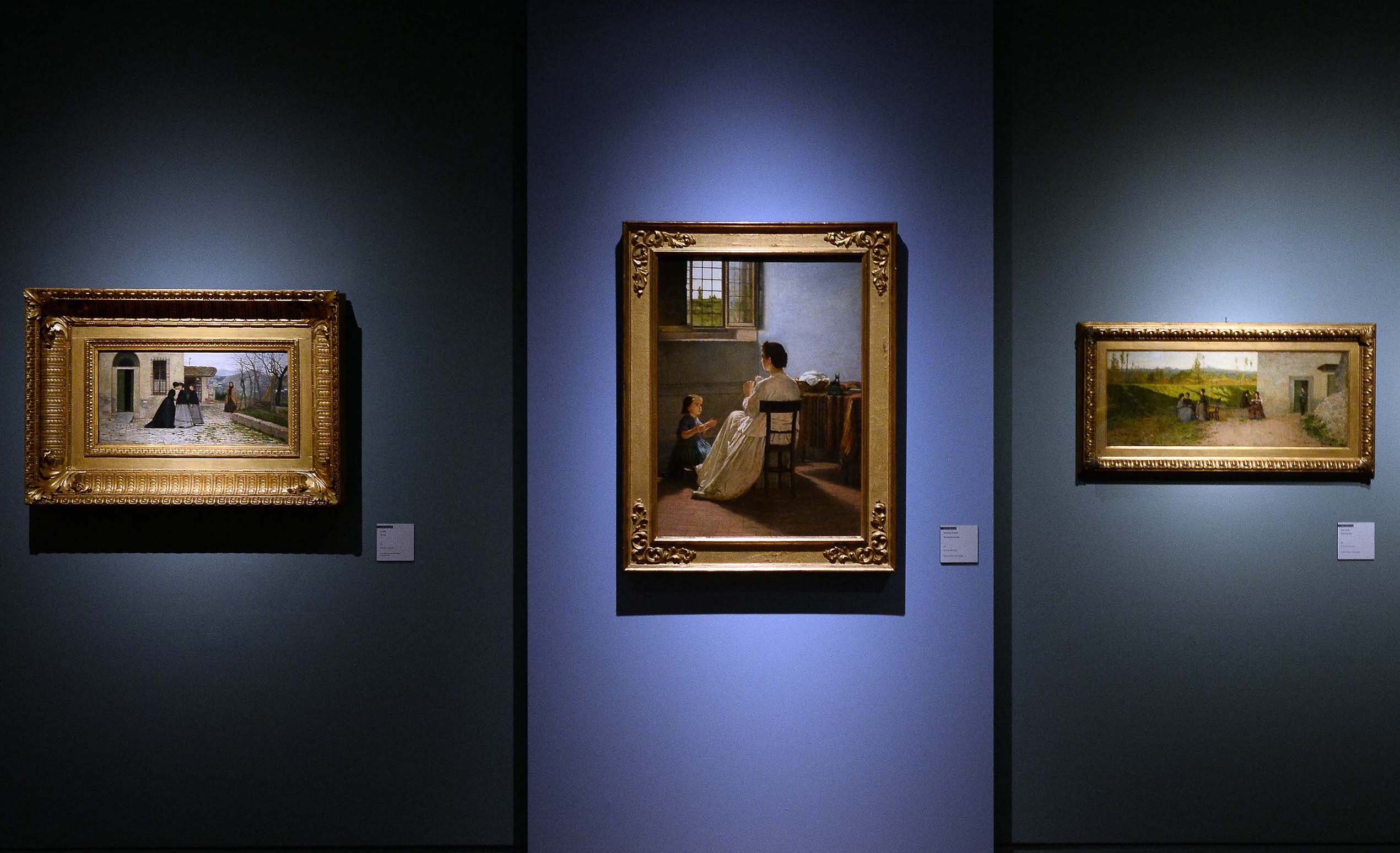
Until March 19: “I MACCHIAIOLI” Italian impressionist artworks. Palazzo Blu, Lungarno Gambacorti, 9, Pisa. Open Monday to Friday from 10 am – 7 pm, Saturdays, Sundays 10 am – 8 pm. Admission: €12, reduced €10.
Pisa’s Palazzo Blu, in collaboration with the Palazzo Blu Foundation, MondoMostre, and the Pisa Foundation, is hosting an exhibition of over 120 exquisite artworks belonging to the Macchiaioli Italian impressionism art movement. Curated by art historian Francesca Dini, the exhibition retraces both the artistic revolution and evolution of the Macchiaioli. The exhibition is mostly made up of pieces from private collections, as well as from institutions such as Florence’s Uffizi Gallery, the National Museum of Science and Technology “Leonardo da Vinci” in Milan, and the National Gallery of Modern and Contemporary Art of Rome. Divided into 11 sections, the Palazzo Blu exhibition brings together major Macchiaioli paintings to work as a timeline of the movement’s development.
The Macchiaioli movement, active in the 1850s and 1860s, originated with a small group of artists in Tuscany. In 1855, these painters began to frequent Caffé Michelangiolo in Florence to discuss both art and politics, as they were dissatisfied with the antiquated conventions of Italian art academies. These painters, including Telemaco Signorini, Giovanni Fattori, and Silvestro Lega, believed the academies to suffocate the creativity of the artist, and instead wished to bring new life to Italian art by integrating bold tones through an intentional use of light and shadow. They believed that the chief components of art were areas of light or shadow, or “macchie,” which literally means patches or spots.
The Macchiaioli also abandoned the historical and mythological subjects of neoclassicism and romanticism, instead finding inspiration in simple everyday life. Most paintings focused on rural subjects, such as landscapes, seascapes, commoners, and farm animals – the hills and seas of Tuscany, especially Castiglioncello, were heavily emphasized. They strove to represent the world as it is, through naturalism and realism. Similar to Monet, they painted in the open air, and the strong emotions evoked by nature evolved in a distinctive trait of every exponent produced.
Although this group of artists began meeting at the Caffé Michelangiolo in 1855, they did not present their artworks until 1861 at the National Exhibition celebrating Italian unification. In its early years, the revolutionary art movement was ridiculed; a hostile review published by the journal Gazzetta del Popolo used the word “Macchiaioli” for the first time. It was used to imply that the artworks were little more than unfinished sketches.
In the height of the movement, political and civil commitment was nearly obligatory. Before the art movement, many members had been revolutionaries in the political uprisings of 1848. Most Macchiaioli participated in the Italian wars of independence and used events of the Risorgimento as inspiration for their artworks; such as The Battle of Magenta by Giovanni Fattori (1859).
Displayed at Palazzo Blu is Cattle in cart (1855-1860) by Nino Costa, an oil painting that belongs to a private collection. The painting depicts two cattle pulling a cart full of hay, with their shepherd standing nearby and guiding them through the landscape surrounding a body of water with the cityscape smudged in the background. The water, cattle, and sky are very light, contrasting heavily with the ground and cityscape. The nature of this painting is very working class, and the subject is far from glamorous. It expresses the beauty in simple life that the Macchiaioli strove to represent.
Also shown in the exhibition is Around Florence (houses in Piagentina), completed in 1866 by Telemaco Signorini. The oil painting shows a nearly empty street in Piagentina area (near Bellariva), with a few people peeking out of their door or sitting against the row of houses. The street depicted is nothing exquisite itself, but the way it is expressed gives it a certain appeal. Again, the painting uses a high contrast between light and dark, with most of the street in a dark shadow – enabling the houses themselves to be highlighted with bright sunlight.
Misunderstood in their time, the Macchiaioli were culturally reevaluated in the early 1900s. Today, they are praised for their innovative use of color, and many consider them to be the forerunners of impressionist painting. Much of the work of the Macchiaioli is much better known in Italy than elsewhere and held in Italian private collections. However, the intimate and profoundly human vision the Macchiaioli had of contemporary reality is engaging both internationally and throughout time. (Molly Mulvihill)








